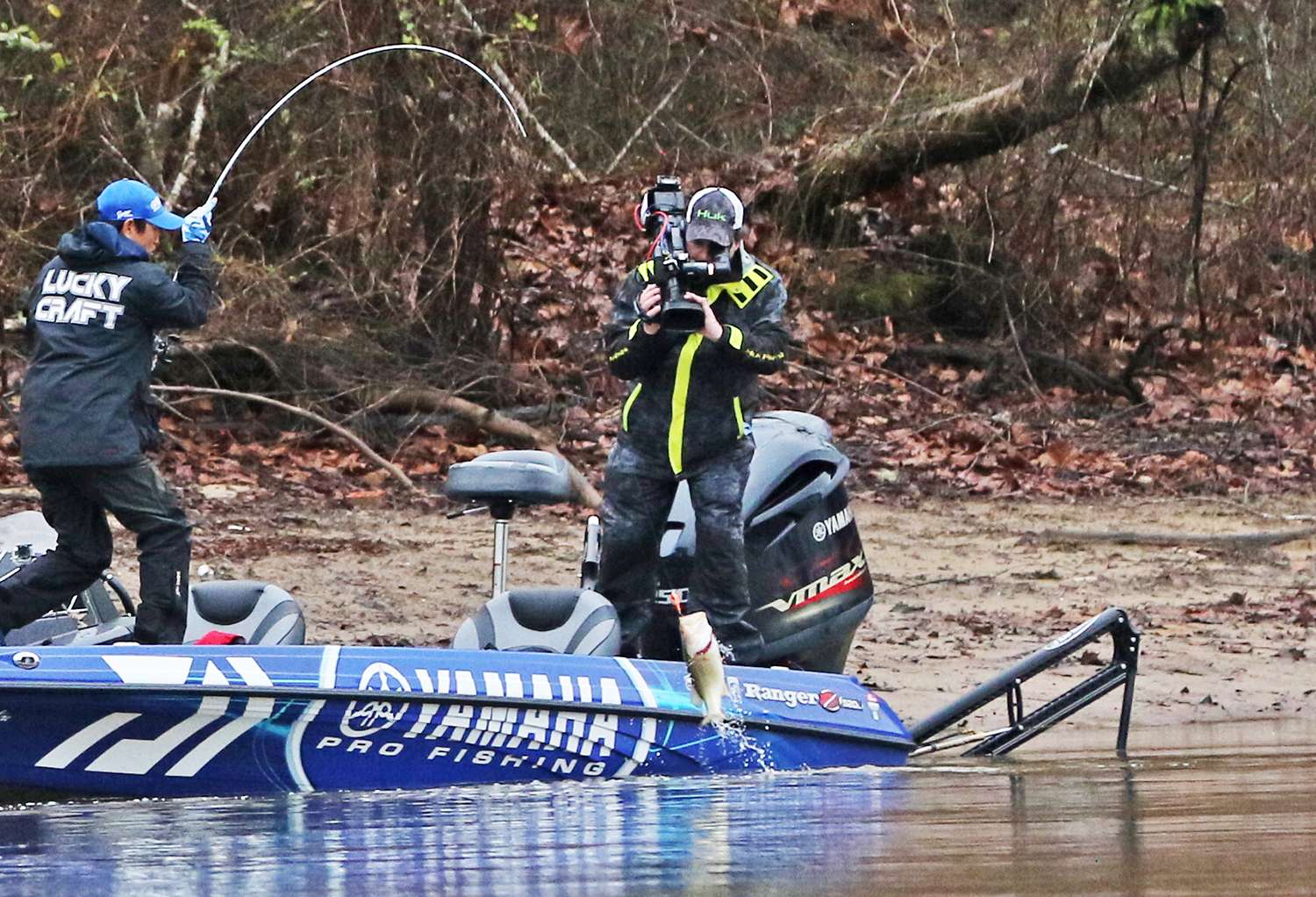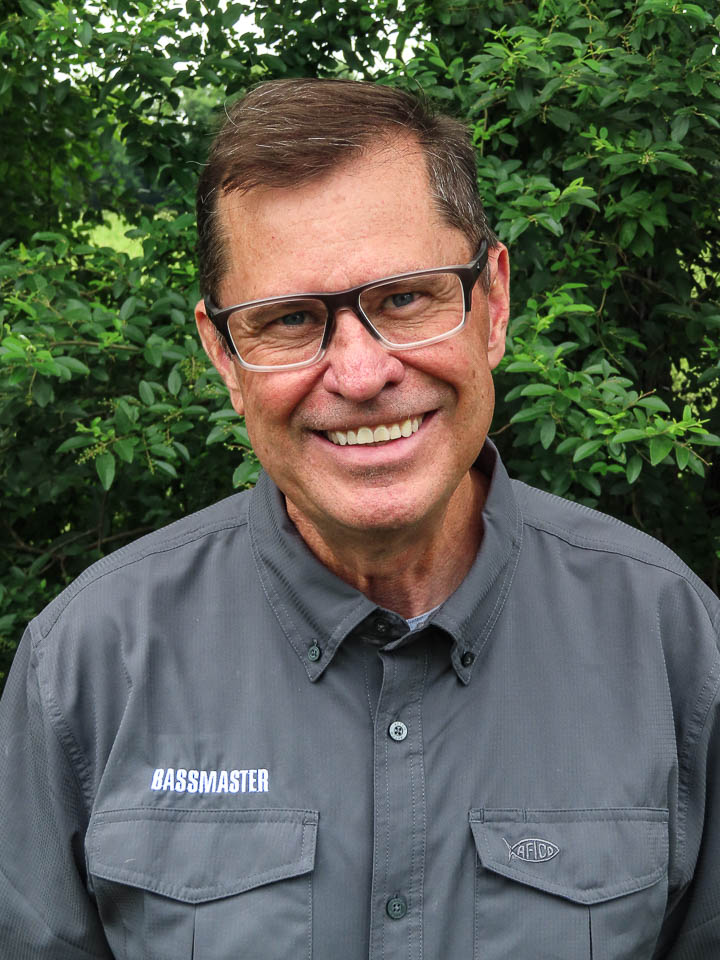
Over the now 50-year history of B.A.S.S. emerged a common theme for some of the greatest products invented along the way. Reducing the luck factor involved in catching more bass was a goal of the inventors.
G.H. Harris grew tired of holding rod in one hand, sculling paddle in the other, to position his boat on fishing spots. Keeping both hands on the rod and reel was the idea, and the solution became the first foot-pedal controlled trolling motor.
Harris and other innovative anglers came up with their ideas while doing what we all enjoy the most, fishing. So did saltwater angler John Oliverio, whose brilliant invention emerged from one of the most far-fetched ideas of them all.
The luck factor is huge on the clear, shallow flats where anchors, push poles and any other manmade intrusion easily spook snook and other prized species. Such bad luck moments were accepted as part of the game. Oliverio refused to play along. There had to be a better way than dropping anchor and watching fish scatter.
An invention capable of quickly and silently anchoring a boat to make stealthy casts without spooking the fish was his idea. The solution became the first hydraulics powered shallow water anchor system known as the Power-Pole shallow water anchor.
How could such a far-fetched idea catch on with anglers? Coincidentally, previous inventions offering the same promises of catching more fish all followed the same track.
In all cases, overcoming skepticism was the first hurdle. Early adopters began winning tournaments, and as word spread the clear competitive advantages made the product take off. Such has been the case over 50 years of B.A.S.S. history.
The Power-Pole shallow water anchor is no exception. Read on for the full story of how Oliverio’s idea became what is standard equipment on bass boats today.
From hot tubs to LEGOS
Oliverio owned a hot tub manufacturing and sales company in Tampa, Fla. A hands-on role in all aspects of the business, from product development to manufacturing, would pay off later on.
Oliverio began experimenting with the idea of a shallow water anchor system. The thought of using hydraulic power to raise and lower a stiff pole with pointed end for piercing the bottom came to mind.
He recognized the system must be super tough. Withstanding heavy torque and pressure from opposing forces of boat and wind was a must for all the many parts. Assembling it all into a working model was a tall order, considering nothing even close had ever been done. Above all else, silent and smooth operation was a must.
The ideas went from drawing board to small scale LEGO model. Prototypes were built and refined until a working model was completed in 1998. Oliverio did it all, from R&D to assembly, testing and finally filing patents and legal documents.
The perfect storm
Soon the first Power-Pole shallow water anchor production model was ready for market. In the year 2000 the first batch assembly of 50 units were built. From Oliverio’s driveway many of those were shipped to saltwater guides and trusted friends.
At the same time angler conservationists successfully lobbied to regulate commercial netting of red drum, or redfish. Gaining prized sport fish status was the outcome, and the Inshore Fishing Association and its redfish tournament circuit came along as a result.
Oliverio caught on to the captive market of anglers seeking a competitive advantage over each other and the fish. The shallow water confines of redfish made the audience even more ideal for marketing the Power-Pole shallow water anchor.
Pitching the idea against the egos of crusty saltwater captains was a tough sell and so was the $1,000 price tag of a Power-Pole shallow water anchor. Oliverio singled out brothers Greg and Brian Watts, who he also knew from their fiberglass repair business.
Anchoring wasn’t an option for Brian, but his brother Greg agreed to give the peculiar contraption a try, mounting it to the transom as instructed. Brian eventually gave in after the team began winning tournaments, including a season point title.
The reason why was anchoring in shallow water. New tactics for catching redfish came as a result, and so did credibility for the Power-Pole shallow water anchor.
Going deep
By 2004, the company occupied 1,500 square feet of a building near Tampa, with year-round production underway. The units were batch built, as they are today, merging sub assemblies into the final product to ensure quality control. Business was booming for the 6-foot model designed for the saltwater flats market. Oliverio recognized it was time to take Power-Pole shallow water anchors to the next level.
That opportunity was confirmed at the 2005 Bassmaster Classic held on nearby Lake Kissimmee. Thousands of fans at the weigh-in, outdoor show and live coverage on ESPN was all it took to recognize the next opportunity for Power-Pole.
In 2008 the 8-foot model debuted as the first shallow water anchor system for bass fishing. To jumpstart branding the company signed sponsorships with high-profile pros, including Gary Klein, Shaw Grigsby, Guido and Dion Hibdon. What panned out in saltwater happened on the Bassmaster Elite Series, as anglers gained competitive advantage in shallow water. Before long, it was a handicap to compete without a Power-Pole shallow water anchor.
Soon, the pros discovered other beneficial uses of the Power-Pole shallow water anchor beyond the original application. At Lake Amistad, Texas, Chris Lane secured his boat over 25 feet of water by lodging the anchor poles into submerged treetops. There appeared to be no boundaries for the benefits of a Power-Pole shallow water anchor.
Priority #1: Customer service
Before the first production model was assembled Oliverio and his first business partner Len Mriscin made customer service their highest priority.
Developing trust with customers willing to pay $1,000 for a product never before introduced was the reason why. Oliverio also recognized that one day the Power-Pole shallow water anchor would have company in the marketplace, and gaining customer loyalty was a must.
The company also backed up its promise with a 5-year warranty, making a statement about its commitment to quality control and customer service.
From then until now, providing short turnaround solutions, many times over a phone call, became the standard business practice.
The future is now
Power-Pole shallow water anchor is now a multi-faceted brand and Oliverio’s inventive mind continues to churn with new ideas. Oliverio also surrounds himself with people who share his likeminded forward-thinking approach. Engineers and programmers share space in his personal office. An open office environment encourages the staff, many there since the beginning, to join in the thought process.
Given Power-Pole’s market share you might think the company is on cruise control. That is far from true. The Blade Edition, Pro Series II, Sportsman II, and now the Micro for kayaks and Spikes for paddleboard anglers are flagship products of the line.
Next up is the Power-Pole VISION, an all-in-one marine tablet that allows multiple boat accessories to be connected and controlled by one smart device. Think of it as a digital dash for the boat. Anything with on/off switch capability can be expanded and custom controlled with dimmers, presets and timers.
Another new innovation is the Power-Pole CHARGE Power Management Station. It is the first bi-directional battery charger that moves power around from cranking battery to accessory batteries for a balanced charge.
What could be next? There is more on the way. The company is expanding its operation as the next generation of ideas turn into innovative products.
Whatever comes along will have originated from the mind of a man who wanted to make fishing more about skill than just plain luck.





